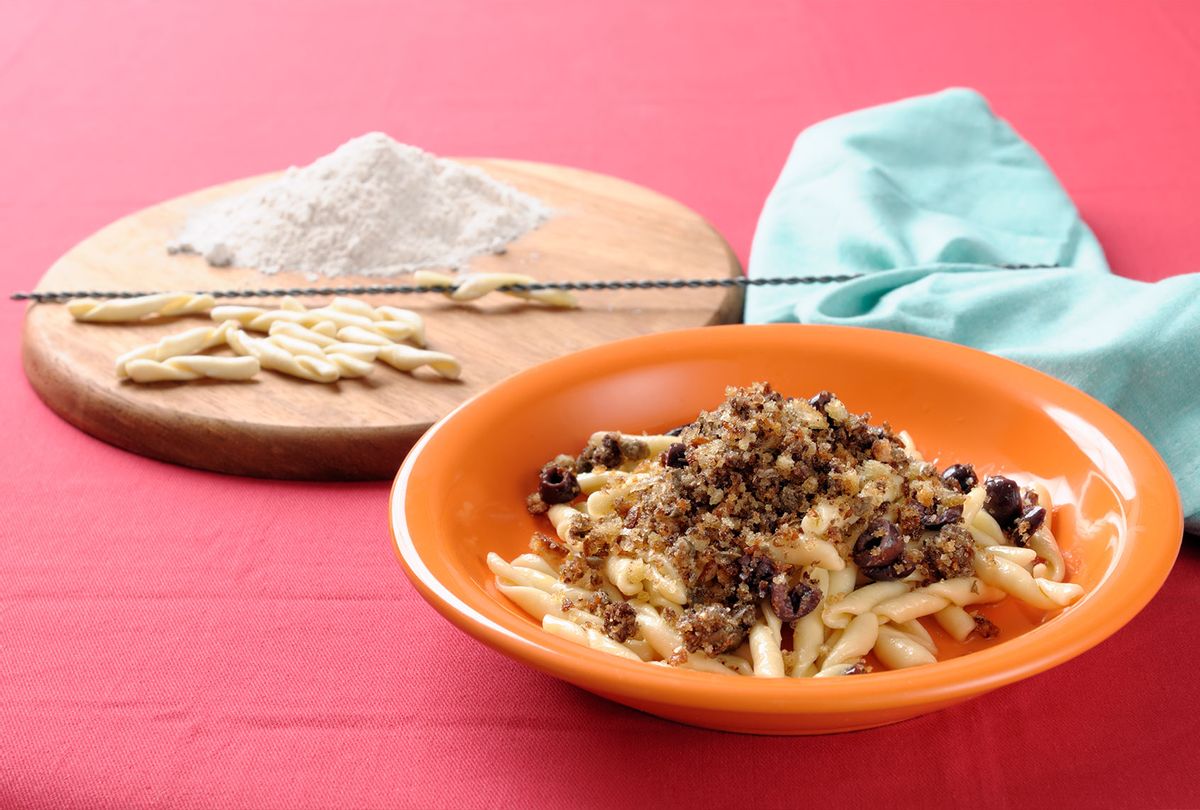I was recently emailing with a friend who, like most of us, has spent more time cooking from home over the last two years than he has in his entire life. Thanks to some meal kit services and a bunch of YouTube tutorials, his cooking skills have vastly improved (from "nightly takeout to actually being able to hold a knife," as he put it). But he emailed me this question the other day: "Hey! Why do restaurant meals consistently taste better than what I make at home? I feel like there's got to be some simple tricks that I'm missing."
I filled him in on the basics. There's the now-infamous Anthony Bourdain bit, delivered on "The Oprah Winfrey Show," about how butter "is usually the first thing and last thing in — in just about every pan, really."
"That's why restaurant food tastes better than home food," he continued. "Of course, most things have butter because butter makes things taste better. Yeah, it's a chef secret. It mellows sauces, it gives it that restaurant sheen and emulsified consistency that we love. And it's — you know, it's classic."
RELATED: Bacon, coffee and pasta pie: A look back at your favorite Quick & Dirty recipes of 2021
I sent along a video from MAD 2012, a symposium organized by René Redzepi, in which David Chang discusses the (mostly racist) vilification of MSG and how the "umami" flavor you taste in many restaurant dishes — even those found in fine dining restaurants — often derives from it.
So more butter, more MSG — what else? "How often do you think about the texture in your food?" I asked. "Uh . . . almost never," my friend responded. "Well, let's change that in the New Year," I wrote.
I think the idea of textural contrast is one that often seems second-nature; if you were, say, planning a dinner party, you might be like, "Oh, hey, I need a little crunch" if you intended to serve meatloaf and mashed potatoes.
Want more great food writing and recipes? Subscribe to "The Bite," Salon Food's newsletter.
But the dish-level importance didn't really stick for me until a few years ago. I was at a little Italian restaurant in D.C.'s Adams Morgan neighborhood and ordered a ricotta-stuffed agnolotti with mint pesto.
The dish was beautiful. The pasta was pillowy, the ricotta was superbly fresh and the pesto had a wintergreen-allium punch that I've many times since tried to recreate at home. What really pushed it over the edge, though, were the toasted and salted pistachios that topped the pasta. With them in the mix, all the other elements seemed to shine that much more, and the interplay in each bite between the soft and crunchy bits was sublime.
I made pasta all the time at home and thought I was doing it "right," dutifully ensuring that I kept my pasta al dente and reserved the water for a slick, glossy sauce. However, when thinking back to my favorite restaurant pastas, there tended to be one thing in common: that extra crunch.
The best bucatini I'd ever had was topped with rabbit ragù and fresh-torn and toasted bread chunks. One of my favorite aglio e olios had more coarsely ground, but just as crisp, breadcrumbs. The restaurant dishes that I found myself choosing came with pine nuts or pumpkin seeds or, as in the case of that angelotti, crushed pistachios.
Once you start looking for textural contrast on a menu, it's everywhere — from salads with crispy chickpeas to tomato soup with cornbread croutons. There are chocolate cakes with shatteringly-crisp cacao nibs and sandwiches griddled until crisp and then stacked with a layer of kettle chips.
All this to say, if you want to take your at-home meals to the next level in the coming year, start stocking your pantry with easy items that you can grab to add some texture to your plate. Here are a few suggestions to help get you started:
- Panko bread crumbs: Toast and season these to add to pasta dishes or vegetable gratins.
- Nuts: Top grain bowls, stews and curries with peanuts or cashews; season and bake some pecans or walnuts to toss over ice cream.
- Seed and spice blends: Everything bagel seasoning adds a nice little touch to everything from avocado to eggs, as does dukka or duqqa, an Egyptian condiment consisting of a mixture of herbs, nuts and spices.
- Tortilla strips: Add these to taco salads, tortilla soups or chilis.
- Crushed potato chips: Toss these into potato salad for some welcome crunch, use them as a casserole topping (I swear, it's so good!) or as a layer on a sub sandwich.
- Chickpeas or peas: Search your supermarket snack aisle for crunchy chickpeas or wasabi peas. These are an ideal salad or grain bowl topper.
- Scallions and pickled vegetables: Check your refrigerator for some crispy vegetables or alliums — like giardiniera, kimchi, pickled vegetables or scallions — and use those to round out your everyday meals.
Some of our favorite shortcut recipes:



Shares